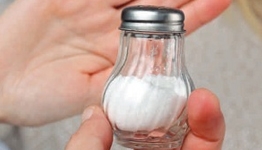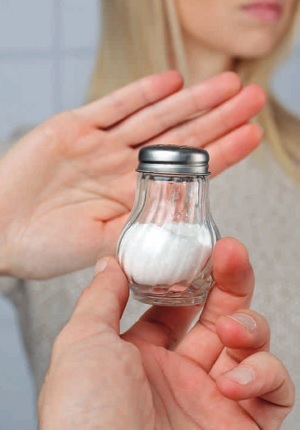Sodium Restricted Diet Instructions


A diet low in sodium should be followed by all healthy individuals, individuals with high blood pressure, and those who suffer from any heart disease or condition. Sodium is not only found in the table salt we add to food, it can also be hidden in many processed and packaged food items. The less sodium you eat, the more you may be able to lower your blood pressure.
What should I modify in my diet?
- Limit sodium to less than 2,300 mg/day ~ 1 teaspoon salt, the less the better.
- Choose fresh fruits and vegetables daily.
- Drink adequate amount of water & fluids daily around 8 cups per day.
 Use fresh food since processed food might contain added sodium levels.
Use fresh food since processed food might contain added sodium levels.- Use fresh poultry, fish, and lean meat, rather than canned or processed types. Avoid cold cuts, sausages, and luncheon meats.
- Eliminate the saltshaker.
- Use herbs, spices, garlic, onions and salt-free seasoning in cooking and at the table.
- Avoid soy sauce, ready made salad dressings, sauces, dips, ketchup, mustard, dried thyme (zaatar), olives, pickles, and certain types of cheeses (halloumi, feta, and yellow cheese).
- Cook rice, pasta, and hot cereal without salt.
- Avoid instant or flavored rice, pasta, and cereal mixes, which usually have added salt.
 Avoid frozen dinners, pizza, packaged mixes, canned soups or broths, and salad dressings, these often have a lot of sodium.
Avoid frozen dinners, pizza, packaged mixes, canned soups or broths, and salad dressings, these often have a lot of sodium.- Rinse canned foods or food soaked in water before using to remove the sodium.
- Avoid salty snacks. Instead of snacking on chips or sweets, eat unsalted pretzels or nuts, raisins, lowfat and fat-free yogurt, frozen yogurt, unsalted plain popcorn with no butter, and raw vegetables.
- When dining out, avoid choosing menu items that have salty ingredients such as bacon, pickles, olives, cheese, ready made sauces, Chinese food, teriyaki sauce, and barbecue sauce.
- Choose vegetables as a side dish, instead of chips or fries.
What food should I chose while shopping at the supermarket?
- Read the nutrition facts on the food labels.
- Understand the Daily Value. The Daily Value for sodium is less than 2,300 milligrams (mg) per day.
 Use the Percent Daily Value (% DV) as a tool. The % DV tells you how much of a nutrient is in one serving of a food. Pick the food with a lower %DV of sodium. As a general rule:
Use the Percent Daily Value (% DV) as a tool. The % DV tells you how much of a nutrient is in one serving of a food. Pick the food with a lower %DV of sodium. As a general rule:
≤ 5% DV of sodium per serving is low
≥ 20% DV of sodium per serving is high- Check the ingredient list on the package for the presence of any of the following:
- Monosodium glutamate (MSG)
- Baking soda (also called sodium bicarbonate)
- Baking powder
- Disodium phosphate
- Sodium alginate
- Sodium citrate
- Sodium nitrite
- Check the Package for Nutrient Claims. However, note that items indicated as reduced sodium or light in salt can also contain high levels of sodium, as this claim means that it is lower as compared to the original one.
- Below is a list of common claims used and what they mean. Always check for the amount of sodium per serving. Best to choose sodium free items and very low sodium items. Consume the others in moderation.
| What It Says | What It Means |
|---|---|
| Salt/Sodium-Free | Less than 5mg of sodium per serving |
| Very Low Sodium | 35mg of sodium or less per serving |
| Low Sodium | 140mg of sodium or less per serving |
| Reduced Sodium | At least 25% less sodium than the regular product |
| Light in Sodium or Lightly Salted | At least 50% less sodium than the regular product |
| No-Salt-Added or Unsalted | No salt is added during processing – but these products may not be salt/sodium-free unless stated |
Reference:
The American Heart Association: http://www.heart.org/HEARTORG/Conditions/HighBloodPressure/MakeChangesThatMatter/ Shaking-the-Salt-Habit-to-Lower-HighBloodPressure_UCM_303241_Article.jsp#.WLVJHNJ94nQ



